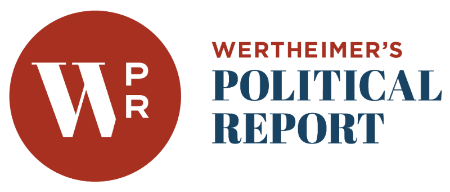Democracy 21 Summary of DISCLOSE 2012 Act
Introduced by Representative Chris Van Hollen
The DISCLOSE 2012 Act requires any “covered organization” which spends $10,000 or more on a “campaign-related disbursement” to file a disclosure report with the Federal Election Commission within 24 hours of the expenditure, and to file a new report for each additional $10,000 or more that is spent. The FEC must post the report on its website within 24 hours of receiving it.
A “covered organization” includes any corporation, labor organization, section 501(c) organization, Super PAC or section 527 organization. Section 501(c)(3) charitable organizations, which are prohibited by their tax status from spending money to influence elections, are excluded.
The disclosure report must include the name of the covered organization, the amount of each disbursement of more than $1,000, the election to which the spending pertains, the name of the candidate identified, and a certification by the head of the organization that the disbursement was not coordinated.
If the covered organization paid for the campaign-related disbursement out of a segregated bank account consisting only of funds donated directly to the account (and not transferred to the account by the covered organization), it has to disclose only those donors who gave an aggregate of $10,000 or more to the account since January 1 of the year preceding the election, the amount of each donation, and the aggregate amount given.
If the covered organization paid for the disbursement out of its general treasury, it has to disclose the source of all donations, including dues payments, of $10,000 or more to the organization since January 1 of the year preceding the election, the amount of each donation, and the aggregate amount given. This excludes any funds received in a commercial transaction or in the form of an investment. If a donor restricts his payment to the organization from being used for a campaign-related disbursement, and the organization consents to the restriction and segregates the money, the identity of the restricted donor does not have to be disclosed.
A “campaign-related disbursement” includes (1) an independent expenditure, which is defined to include any public communication that contains express advocacy or the functional equivalent of express advocacy, (2) an electioneering communication, which is defined to include any broadcast ad which refers to a federal candidate and is broadcast anytime after January 1 of the election year (in the case of a congressional candidate), or in the period beginning 120 days prior to the first primary or caucus in any State until the date of the general election (in the case of a presidential candidate), or (3) a “covered transfer.”
A “covered transfer” is defined to include any transfer or payment of funds by a covered organization to another person if the transferor designates that the funds should be used for a campaign-related disbursement, if the transfer was made in response to a solicitation that the funds are to be used for a campaign-related disbursement, if there were discussions between the transferor and recipient about making a campaign-related disbursement, if the transferor or recipient had made campaign-related disbursements of $50,000 or more in the prior two years, or if the transferor had reason to know the recipient would make campaign-related disbursements of $50,000 or more in the next two years.
This provision is necessary to prevent the actual sources of funds being spent to influence federal elections from being hidden by laundering the funds through third party groups.
If the transferor and recipient are affiliated, only transfers that aggregate to $50,000 or more in a calendar year are covered.
The legislation also includes improved “Stand By Your Ad” requirements for Super PACs and other outside spending groups. Any covered organization that pays for an independent expenditure or electioneering communication broadcast on radio or TV must disclose in the ads its top five funders (for a TV ad) or top two funders (for a radio ad). The head of the organization also must appear in the ad and state that he or she approves the broadcast message.
The legislation requires any covered organization which submits regular reports to its shareholders, members or donors to include in such reports any information that is required to be reported to the FEC under the legislation, and to post a hyperlink on its homepage to the location of the organization’s disclosure report on the FEC website.
The legislation requires any registered lobbyist, including individuals and organizations that are registered, to report under the Lobbying Disclosure Act the amount of any independent expenditure or electioneering communication made by the registered lobbyist.
